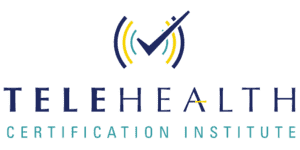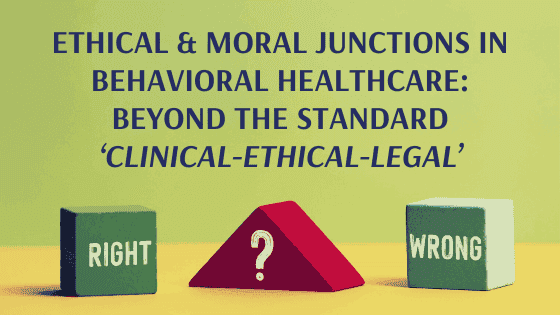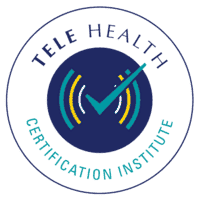Expand the meaning of ethics in psychology and therapy beyond “codes of ethics” and clearly differentiate it from “risk management”
The following nine junctions serve to differentiate right vs. wrong and good vs. bad regarding suicidal client or therapist protection, lying to clients, clinically correct or false DSM DX, managing boundaries, digital immigrant therapists and digital native clients relationships, gender transition, opposition or advocacy for abortion in banned states, recommendation of psychedelics to patients, ethics of nudity between therapist and client.
Boundaries in therapy can only be understood and assessed within the context of therapy. This context includes clients, setting, type of therapy, and therapists. Client factors involve culture, history, age, gender, presenting problem, mental state, socio-economic class, personality, sexual orientation, social support, beliefs, physical health, and prior therapy experience. Setting factors include outpatient vs. inpatient, solo vs. group practice, location, and various locality considerations. Therapy factors encompass modality, duration, intensity, population, and theoretical orientation. Therapeutic relationship factors involve the quality, length, stage, and nature of the alliance, as well as dual relationships. Therapist factors include culture, age, gender, sexual orientation, and scope of practice.
First junction: protect suicidal clients or protect the therapists, where mental health professionals must decide whether to protect themselves by hospitalizing clients and increase their probability of dying or to serve and protect the client but risk litigation.
Second junction: the decision of whether to lie or not to lie to our clients is a complex ethical dilemma that therapists face, with research indicating that a significant percentage of therapists have admitted to directly lying to their clients, particularly about their feelings of frustration or disappointment, personal preferences, and their own well-being and beliefs. However, the American Psychological Association's Code of Ethics recognizes that deception may be ethically justifiable in certain situations to maximize benefits and minimize harm, but psychologists have a responsibility to consider the potential consequences and address any resulting mistrust or harm that may arise from such practices.
Third junction: give a clinically correct DSM DX or a false DX that serves the therapist and/or client. Intentionally providing a client with an incorrect diagnosis can have several motivations, such as ensuring insurance coverage, assigning a milder diagnosis, avoiding negative impacts on education or employment, supporting workers' compensation or disability claims, assisting a lawsuit involving mental health injury, or helping a person obtain assistance or accommodations at school or work. However, deliberately misdiagnosing carries risks, including providing substandard care, engaging in unethical practices, and facing potential audits by insurance companies that may require repayment of funds.
Fourth junction: Clinical Effectiveness vs. Risk Management: Managing Boundaries (for example, gifts, touching, DR) distinguishes between boundary crossings (ethical, helpful) and boundary violations (unethical, exploitative) and examples for each category.
Fifth junction: Digital Immigrant Therapists vs. Digital Native Clients, explores therapists as those in control of the field, often older and unfamiliar with technology, while most clients are younger and grew up with technology. This generational difference leads to varying values regarding self-disclosure, communication frequency, and overall transparency.
Sixth junction: Opposition or support for minor's gender transition, explores refusal to support gender-affirming treatment for minors which may lead to suicide and depression due to gender dysphoria, while supporting care could result in irreversible changes they may regret. Gender dysphoria causes unease when one's biological sex doesn't match their gender identity, often leading to self-harm, anxiety, depression, and suicide. Treatment options for minors include social changes and hormone therapy, while surgery is rare for them.
Seventh junction: Oppose or help women patients seeking abortions. This section has two parts: The first part is the more global, moral junction of standing at the moral/clinical crossroads of abortion, which is comprised of women’s freedom to choose whether to abort or not vs. the belief that abortion is the intentional act of having a human in utero killed and that supporting elective abortions is immoral, and humans in utero deserve protection. The second part is about pro-choice clinicians who consult with women on abortion in states that, after the 2022 Supreme Court’s overturning of Roe v. Wade, have legally banned or restricted them - these clinicians can be accused of “aiding & abetting”.
Eighth junction: recommending potentially helpful but illegal psychedelics to patients. Psychedelic therapy, which involves substances like Psilocybin, MDMA, LSD, DMT, Mescaline, and Ayahuasca, has a long history and growing popularity worldwide. However, it remains illegal in the US, as psychedelic drugs are still controlled substances. Notable institutions like Johns Hopkins Center for Psychedelic and Consciousness Research and UC Berkeley are leading the exploration of psychedelics for treating various concerns.
Ninth junction: questions whether a therapist can also act as a coach. Coaching, unlike psychotherapy, is unregulated, and transitioning from therapy to coaching requires a clear distinction through a separate agreement.
Lastly, we must ponder the essence of Context: Is it ethical for therapists to be naked with clients? One must consider the contact within different settings such as in the office, at a local gym, or on a nudists’ beach, etc.
These nine junctions were considered on a Live Webinar that was converted into an Online Self-Study course, "Ethical & Moral Junctions in Behavioral Healthcare: Beyond the Standard 'Clinical-Ethical-Legal'," which provides a unique and thought-provoking exploration of ethics in psychology and psychotherapy. By delving beyond mere codes of ethics and risk management, this presentation sheds light on the heart of ethics, distinguishing between right and wrong and good and bad, by introducing the nine junctions that mental health practitioners may encounter in their work to enhance understanding of the complexities involved and foster ethical decision-making in the field of behavioral healthcare.
**********
We welcome guest author Ofer Zur, Ph.D. Dr. Zur is the founder of the Zur Institute. He is a licensed psychologist, instructor, forensic and ethics consultant, and expert witness in Sebastopol, CA. His writing and teaching in the US and abroad focus on ethics, critical thinking, boundaries, dual relationships, managed-care-free private practices, victims, psychology of war, and psychology of gender. For many years, he taught at graduate schools, such as the CSPP (Alameda, CA) and CIIS (San Francisco, CA). His books include Dual Relationships and Psychotherapy (2002, co-edited with Arnold Lazarus) and HIPAA Compliance Kit (2003, Revised 2016, 2018). His book, Boundaries In Psychotherapy, was published in 2007 by APA Books. His latest book (2017) is Multiple Relationships in Psychotherapy and Counseling: Unavoidable, Common and Mandatory Dual Relations in Therapy, published by Routledge.




The course was so informative and I was glued to my screen for the entire duration. I received so much knowledge concerning ethics in telehealth and I am greatly encouraged to read about all the standards and policies that pertain to my practice. Thank you!.